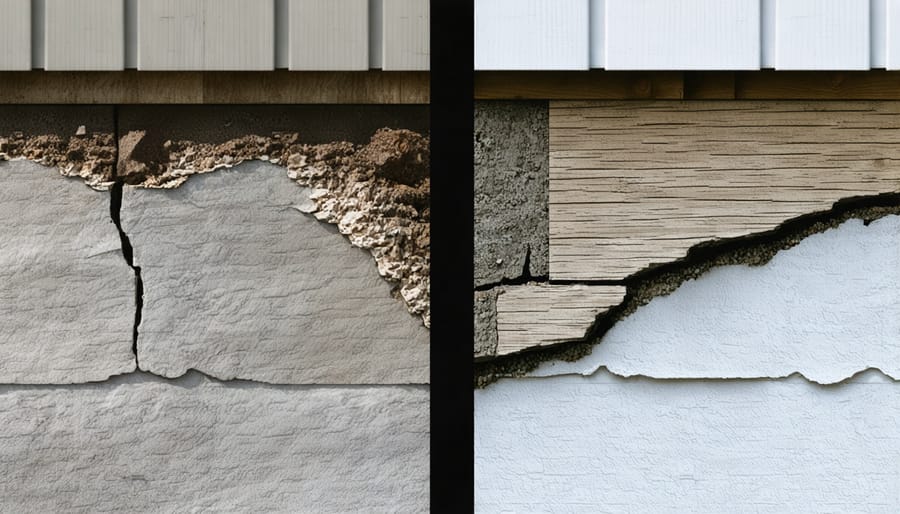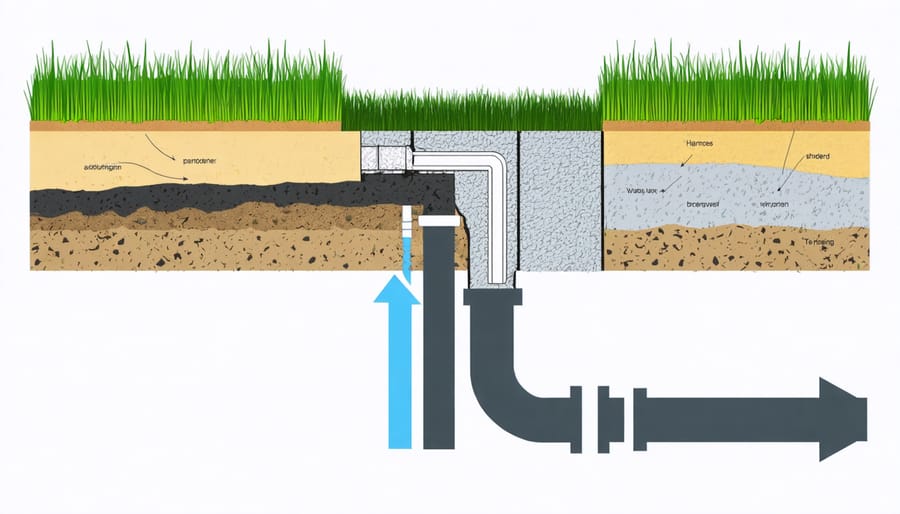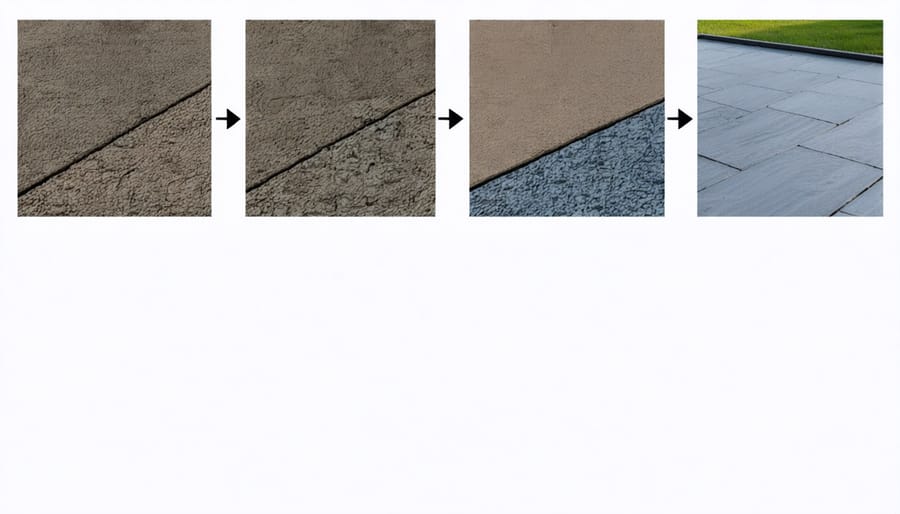Professional Basement Waterproofing Makes Your Shed Last Decades Longer

Protect your new construction investment with a comprehensive basement waterproofing system installed during the initial building phase. Modern waterproofing techniques have evolved far beyond simple barrier methods, now incorporating multiple layers of defense against moisture infiltration. Starting with proper foundation preparation and implementing waterproofing measures during construction saves thousands in potential future repairs while ensuring a dry, healthy basement space for decades to come.
Professional basement waterproofing during new construction typically costs 40% less than retrofitting solutions and provides superior protection through integrated drainage systems, vapor barriers, and waterproof membranes. These systems work together to direct groundwater away from your foundation walls, prevent hydrostatic pressure buildup, and create an impenetrable barrier against moisture penetration.
By addressing waterproofing during the construction phase, builders can properly install crucial components like exterior drainage boards, dimple membranes, and continuous vapor barriers without the limitations faced during retrofit installations. This proactive approach guarantees maximum effectiveness and long-term peace of mind for homeowners.
Why Basement-Style Waterproofing Matters for Your Shed
The Hidden Costs of Poor Waterproofing
When waterproofing isn’t done properly during initial construction, the long-term costs can be staggering. Water damage doesn’t just affect the immediate area – it creates a cascade of problems throughout your basement structure. Mold and mildew growth can begin within 48 hours of water exposure, leading to poor air quality and potential health issues for your family.
The repair costs for inadequate waterproofing can quickly spiral. Foundation cracks may develop, requiring extensive structural repairs that can run into thousands of dollars. Your basement walls might need complete rehabilitation, including removing and replacing damaged drywall, insulation, and flooring. Electrical systems can be compromised, creating both safety hazards and costly repairs.
Personal belongings stored in your basement are also at risk. Family heirlooms, furniture, and electronics can be destroyed by moisture and flooding. Even minor seepage can lead to musty odors that permeate your entire home, reducing its value and making it less appealing to potential buyers.
Investing in proper waterproofing during construction typically costs just 1-2% of your total building budget, while repairs for water damage can easily exceed 10-15% of your home’s value.


Essential Waterproofing Components for New Shed Construction
Foundation Membrane Systems
Foundation membrane systems provide a crucial waterproof barrier between your basement walls and surrounding soil. These specialized membranes come in two main types: sheet membranes and liquid-applied membranes. Sheet membranes, typically made from modified bitumen or synthetic materials like HDPE, are applied in large sections and create a durable waterproof shield. They’re particularly effective because they maintain consistent thickness throughout the application.
Liquid-applied membranes, on the other hand, are sprayed or rolled onto foundation walls, forming a seamless coating that adheres directly to the concrete. These membranes are excellent for complex foundation shapes and can easily accommodate penetrations like pipes or utilities. When properly applied, they create a rubber-like waterproof barrier that remains flexible and can bridge small cracks.
Both systems require careful surface preparation and professional installation for optimal performance. The membrane must extend from the footer to grade level, with special attention paid to corners, joints, and penetrations. For added protection, many contractors recommend installing a drainage board over the membrane to direct water away from the foundation and protect the membrane from damage during backfilling.
Drainage Solutions
A well-designed drainage system is crucial to prevent water damage in your new basement construction. The system should include both exterior and interior components working together to channel water away from your foundation. Start with properly graded soil that slopes away from the structure at a rate of about 6 inches for every 10 feet. Install a high-quality perimeter drain system with perforated pipes surrounded by gravel, positioned at the foundation’s base.
French drains are particularly effective, combining crushed stone and perforated pipes to create efficient water channels. These should connect to a sump pump system that actively removes collected water from around your foundation. Don’t forget to install proper gutters and downspouts that extend at least 6 feet from your home’s foundation.
For extra protection, consider adding a surface drainage system that includes catch basins and channel drains in areas where water tends to pool. Remember, proper drainage isn’t just about installing components – it’s about creating a comprehensive system that works together to keep your basement dry year-round.
Step-by-Step Installation Process
Surface Preparation
Before applying any waterproofing materials, proper surface preparation is essential for long-lasting results. Start by thoroughly cleaning the concrete surface, removing all dirt, debris, and loose materials. Use a wire brush or pressure washer to ensure a completely clean surface. Check for any cracks, holes, or imperfections in the concrete and repair them using an appropriate concrete patching compound.
Next, inspect the surface for moisture. The concrete should be completely dry before proceeding with waterproofing application. Use a moisture meter to confirm acceptable moisture levels. If needed, allow additional drying time or use fans to expedite the process.
Finally, apply a concrete primer to enhance adhesion between the waterproofing material and the surface. This step creates an optimal foundation for the waterproofing system and ensures maximum effectiveness of your chosen waterproofing solution.
Application Techniques
Successful basement waterproofing in new construction starts with careful preparation and systematic application. Begin by ensuring the foundation surface is clean, dry, and free from debris. Apply a primer coat evenly across all surfaces, allowing it to dry completely according to manufacturer specifications.
The next crucial step is the waterproofing membrane installation, which should be done with precise overlapping of sheets to prevent any gaps. Work from the bottom up, smoothing out air bubbles as you go to ensure proper adhesion. Pay special attention to corners and joints, using reinforcement strips for added protection.
For optimal results, install a drainage board or protection course over the waterproofing layer. This helps prevent damage during backfilling and provides additional drainage capability. Finally, ensure proper curing time before backfilling, and use clean, well-draining material for the backfill process. Remember to slope the ground away from the foundation to direct water away from the structure effectively.

Maintenance and Long-term Protection
Regular maintenance and proactive care are essential for ensuring your basement waterproofing system’s longevity. Start by conducting seasonal inspections of your foundation walls, paying special attention to areas where waterproofing materials are visible. Look for signs of wear, cracks, or separation in sealants and membranes.
Keep your gutters and downspouts clean and properly functioning to prevent water from pooling near your foundation. Ensure downspouts extend at least 6 feet away from your home’s foundation, and maintain a positive grade sloping away from your house to direct water flow appropriately.
Test your sump pump every three to four months by pouring water into the sump pit and ensuring it activates properly. Install a battery backup system to protect your basement during power outages. Regular cleaning of drainage systems and weeping tiles helps prevent clogs that could compromise your waterproofing.
Monitor indoor humidity levels and use dehumidifiers when necessary to prevent condensation. Address any minor issues promptly before they develop into major problems. Consider scheduling professional inspections every two years to catch potential issues early.
Document all maintenance activities and keep warranties readily available. If you notice any changes in your basement’s condition, such as new dampness or musty odors, contact a waterproofing specialist immediately. With proper care, your basement waterproofing system can provide reliable protection for decades.
Investing in proper basement waterproofing during new construction is one of the smartest decisions you can make as a homeowner. By implementing comprehensive waterproofing measures from the start, you’re creating a strong foundation that will protect your home for decades to come. The combination of exterior drainage systems, quality waterproof membranes, and proper foundation sealing works together to create an effective moisture barrier that prevents water damage and maintains structural integrity.
Remember that while the initial investment in professional waterproofing might seem substantial, it’s significantly more cost-effective than addressing water damage after the fact. A properly waterproofed basement not only protects your home’s foundation but also creates a dry, healthy living space that adds value to your property. By following industry best practices and using high-quality materials during construction, you’re ensuring peace of mind and avoiding potentially expensive repairs down the line.
Don’t forget to maintain regular inspections of your waterproofing systems and address any minor issues promptly to keep your basement dry and protected for years to come.

